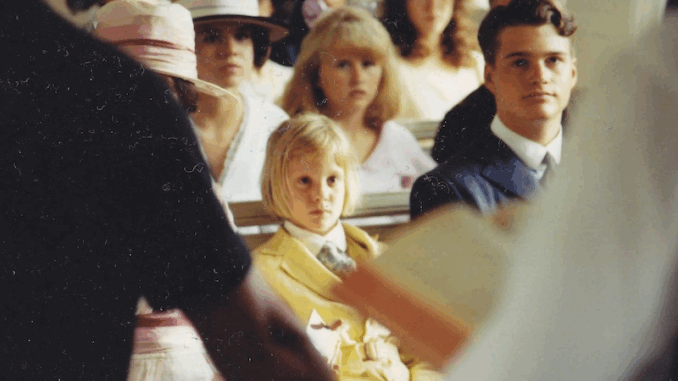
At first glance, Fried Green Tomatoes seems like a story about friendship, food, and small-town life. But at its core, it’s a film about stories themselves — the act of telling them, the impact of hearing them, and the way they shape who we are. Through the character of Ninny Threadgoode, storytelling becomes more than entertainment. It becomes a form of survival, healing, and transformation.
This article explores how storytelling functions as a central force in Fried Green Tomatoes, turning memories into lessons, trauma into strength, and silence into self-expression.
The Frame Narrative: Two Women, Two Worlds
The film is structured around a frame narrative — Evelyn Couch, an unfulfilled housewife in the 1980s, visits a nursing home and meets the sharp-tongued, endlessly chatty Ninny Threadgoode. Through Ninny’s recollections of Whistle Stop in the 1920s and ‘30s, Evelyn is transported into a world full of bold women, brave acts, and unspoken truths.
This dual narrative isn’t just a clever storytelling device — it’s thematic. Evelyn and Ninny represent two generations of women, each constrained by societal roles and expectations. As Ninny tells her stories, Evelyn doesn’t just listen — she begins to change.
Storytelling becomes the bridge between generations, between fantasy and reality, between stagnation and growth.
Ninny Threadgoode: The Storyteller as Catalyst

Ninny is more than a charming old woman. She’s the keeper of lost histories. Through her stories about Idgie, Ruth, the Whistle Stop Café, and the mysterious disappearance of Frank Bennett, Ninny brings to life a time and place that no longer exist — but still hold deep relevance.
Her storytelling isn’t passive. It’s transformative. It gives Evelyn the courage to confront her life, find her voice, and even smash a few cars in the process. Ninny becomes a sort of guide — a Southern Scheherazade who rescues Evelyn not with swords or spells, but with words.
It’s not always clear if Ninny is narrating history or myth — but that’s part of the magic. As with many oral traditions, her tales blend fact and fiction into something more powerful: truth that lives in feeling, not footnotes.
The Power to Reclaim Identity
As Evelyn listens, she begins to reimagine herself. Inspired by Idgie’s fearlessness and Ruth’s quiet strength, she sheds her dependency, her passivity, and her internalized misogyny. Storytelling becomes a kind of mirror — one in which Evelyn sees a version of herself she never thought possible.
This is a key idea in feminist literature: that hearing the stories of other women allows us to reframe our own. In Fried Green Tomatoes, the stories of Whistle Stop aren’t just history lessons — they’re tools for liberation.
Storytelling as Resistance
In a Southern town full of racial tension, gender restrictions, and strict social codes, many characters in the film have no power — not in courts, not in politics, not even in families. But they do have stories. And in those stories, they reshape reality.
Take Sipsey, the Black cook and housekeeper. Her role is often silent, but her actions — especially in the hidden murder of Frank Bennett — are essential to the story’s climax. Though she never narrates her perspective, Ninny’s story gives her a kind of retroactive justice. Her actions are remembered, even honored, in the oral retelling.
Or consider Idgie Threadgoode. She’s never “out” as queer in the film, yet the subtext of her love for Ruth is unmistakable. Through storytelling, their relationship is preserved in a way that history might have erased. In this way, storytelling becomes a form of resistance — a way to honor lives that would otherwise be silenced.
Stories vs. Silence: Evelyn’s Awakening
When we first meet Evelyn, she’s stuck in a marriage where she’s ignored, living in a body she hates, surrounded by media that tells her she’s invisible. Her initial silence is physical, emotional, and spiritual.
But as she listens to Ninny’s stories, she finds words of her own. She begins to speak up — first in small ways, then in explosive ones (like the famous “Towanda!” scene). The stories allow her to name her rage, understand her dissatisfaction, and rewrite her role in her own life.
She even begins telling stories herself — to her husband, to strangers, to herself in the mirror. This shift from listener to storyteller is a radical act of reclamation.
Truth, Memory, and Myth
Is Ninny really Idgie? The film leaves this question intentionally ambiguous. It doesn’t matter. The point isn’t whether the stories are “true” in the journalistic sense — it’s that they carry emotional truth, and that truth transforms those who hear it.
In many ways, Fried Green Tomatoes argues that stories are more important than facts. They keep people alive long after they’re gone. They create legacies. They protect what history might try to erase.
And they evolve. Evelyn’s life becomes part of the story, just as Ninny’s once was. The storytelling torch is passed.
Final Thought
In Fried Green Tomatoes, storytelling is everything. It connects the past to the present, women to one another, and individuals to the power they forgot they had. Whether it’s a tale of forbidden love, a recipe for fried green tomatoes, or a legend about a woman named Towanda, each story holds a piece of truth — a spark waiting to light someone’s fire.
So if you’ve ever been changed by a story — if someone’s words helped you find your own — you know what Fried Green Tomatoes is really about.
It’s not just a film about friendship, food, or feminism. It’s a love letter to the power of telling stories — and being brave enough to live one worth telling.
